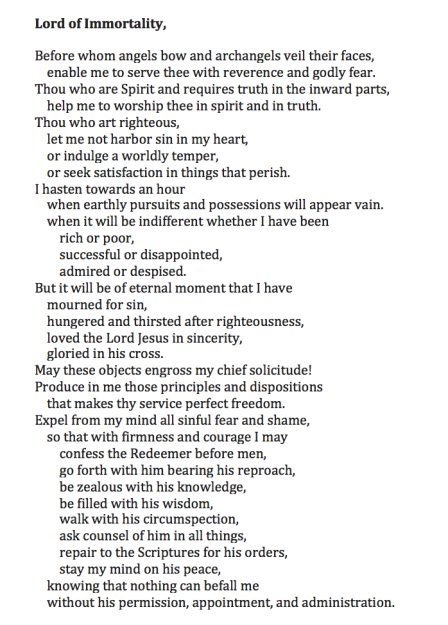I passed a car today with a bumper stick that read, “It’s not all so ‘bumper sticker slogan’ simple.”
That’s true in politics, business, the Christian life, and, even re-organizational design.
I’m reading the book “Into Thin Air” by Jon Krakauer, detailing the 1996 expedition to the summit of Mt. Everest and the tragedy on the descent.
The month-long process of “acclimatization”, adjusting physiologically to the rarified atmosphere of high altitudes, was far from a straight line up the summit.
Krakauer was asked by the editor of Outside magazine to join an expedition to Mt. Everest, elevation 29,028 feet, and then to write an article about its commercialization. Having never ascended above 17,200 feet, he spent a year in preparation before joining the team in India in late March 1996 who would then take him to the summit.
 They arrived at the 17,600 foot high Base Camp on April 12. At that altitude, the oxygen level is 50% of that at sea level. At the summit, it decreases to 1/3 of that at sea level. While the human body will adjust, it can take weeks to acclimatize. To do so they would need to reach various camps spaced about 2000 feet vertically up the mountain.
They arrived at the 17,600 foot high Base Camp on April 12. At that altitude, the oxygen level is 50% of that at sea level. At the summit, it decreases to 1/3 of that at sea level. While the human body will adjust, it can take weeks to acclimatize. To do so they would need to reach various camps spaced about 2000 feet vertically up the mountain.
Krakauer’s expedition ascended and descended to these camps with varying rates and duration:
- Base Camp to Camp 1, and then back to Base Camp.
- Base Camp to Camps 1 and 2, then back to 1 and Base Camp.
- Base Camp to Camps 1, 2, and 3, then back to 2, 1, and Base.
After a series of attempts and days of rest and recovery from different altitude complications, Krakauer reached the summit on May 10, more than a month after arriving at the Base Camp. He only remained at the top of the world for 5 minutes; hardly time to bask in his achievement.
In Romans 8:12-17, the Apostle Paul says, “Therefore, brothers, we have an obligation—but it is not to the sinful nature, to live according to it. For if you live according to the sinful nature, you will die; but if by the Spirit you put to death the misdeeds of the body, you will live, because those who are led by the Spirit of God are sons of God. For you did not receive a spirit that makes you a slave again to fear, but you received the Spirit of sonship. And by him we cry, “Abba, Father.” The Spirit himself testifies with our spirit that we are God’s children. Now if we are children, then we are heirs—heirs of God and co-heirs with Christ, if indeed we share in his sufferings in order that we may also share in his glory.” NIV
Different tenses indicate past facts, present realities, and future outcomes in that passage. Past events such as Christ’s work on our behalf and our response of faith, make a difference in how we live today. And these present realities in our life of faith determine a future character and destiny. They are interconnected.
While time is linear, our walk of faith is not. We take steps forward and back, forward again two steps, then back. Sometimes we experience great strides, but other times it’s really tough slogging. There are moments of clarity, as well as dark perplexity. And we pray for times of rest and recovery along the way. But in all of that, growth is happening, “acclimatization”, if you will, is taking place, and Jesus is becoming both the object of our affection and our source of satisfaction if we take His yoke upon us.
There is joy in the journey. Do we believe that? What we are experiencing in our ministry today has required our own spiritual acclimatization. Only as we submit to His lordship and “keep seeking the things  above” (Colossians 3:1) are we able to take higher ground.
above” (Colossians 3:1) are we able to take higher ground.
And finally, from “The Valley of Vision”, a collection of Puritan prayers and devotions, the one entitled “Openness” reads,
Spring Coaching Tips
- All good things start (again) with Jesus.
- A Staff Team Pioneering a New Campus Together.
- Select Next Year’s Leadership Now.
- A new 31 Day Experiment.
- Natural mode launching.
- Top Ten Myths About Sharing Your Faith.
- 25 Ways to Keep the World Before Your Students.
- Balancing Relationships.
- Noticing Your Way Into Spiritual Conversations.
- Understanding Change.
- Hove and Holleman’s “A Grander Story.”
- First, prayer.
- Where we’re seeing both fast starts and fast growth.
- “Better than my dreams.”
- Celebrate!
- Becoming not ashamed of the Gospel.
- The First Two Weeks in the Fall.
- Summer Survival.
- Another use for an effective tool.
- Keys to establishing new believers.
- The mindset of Generation Z.
- Off and Running in the Fall.
Selected Tips from Fall 2016
- “Act as if it were true”.
- Snippets.
- Ways a coach helps.
- Prayer/Care/Share.
- Did you know…?
- Movement Leadership Forms.
- Ministry beyond ministry.
- Launch and Build Bridges Movements.
- Future Teachers Living Missionally.
- A Destino Multiple Movements Case Study.
- Freshman Takeover Night.
- Some ways to build student leadership.
